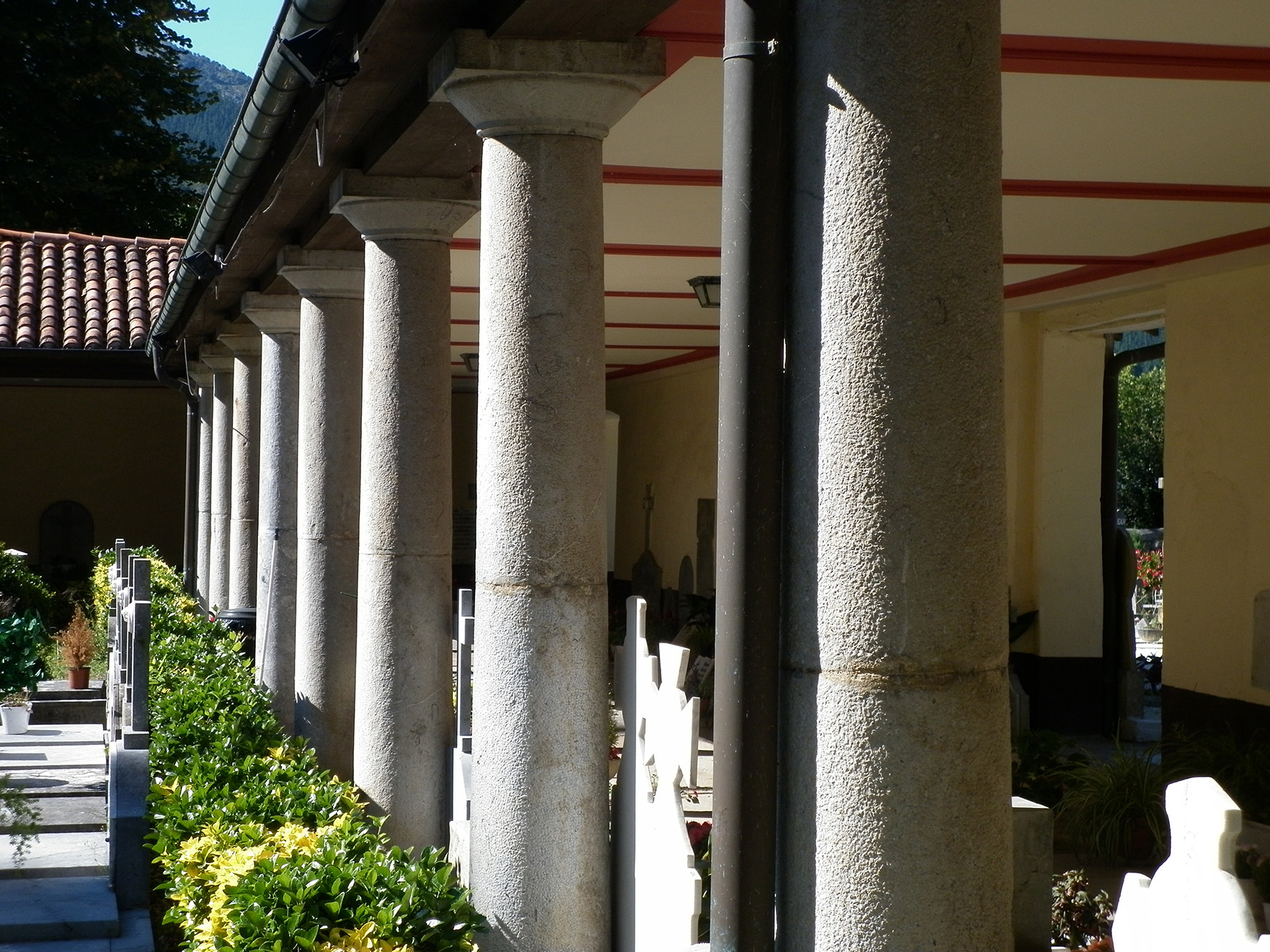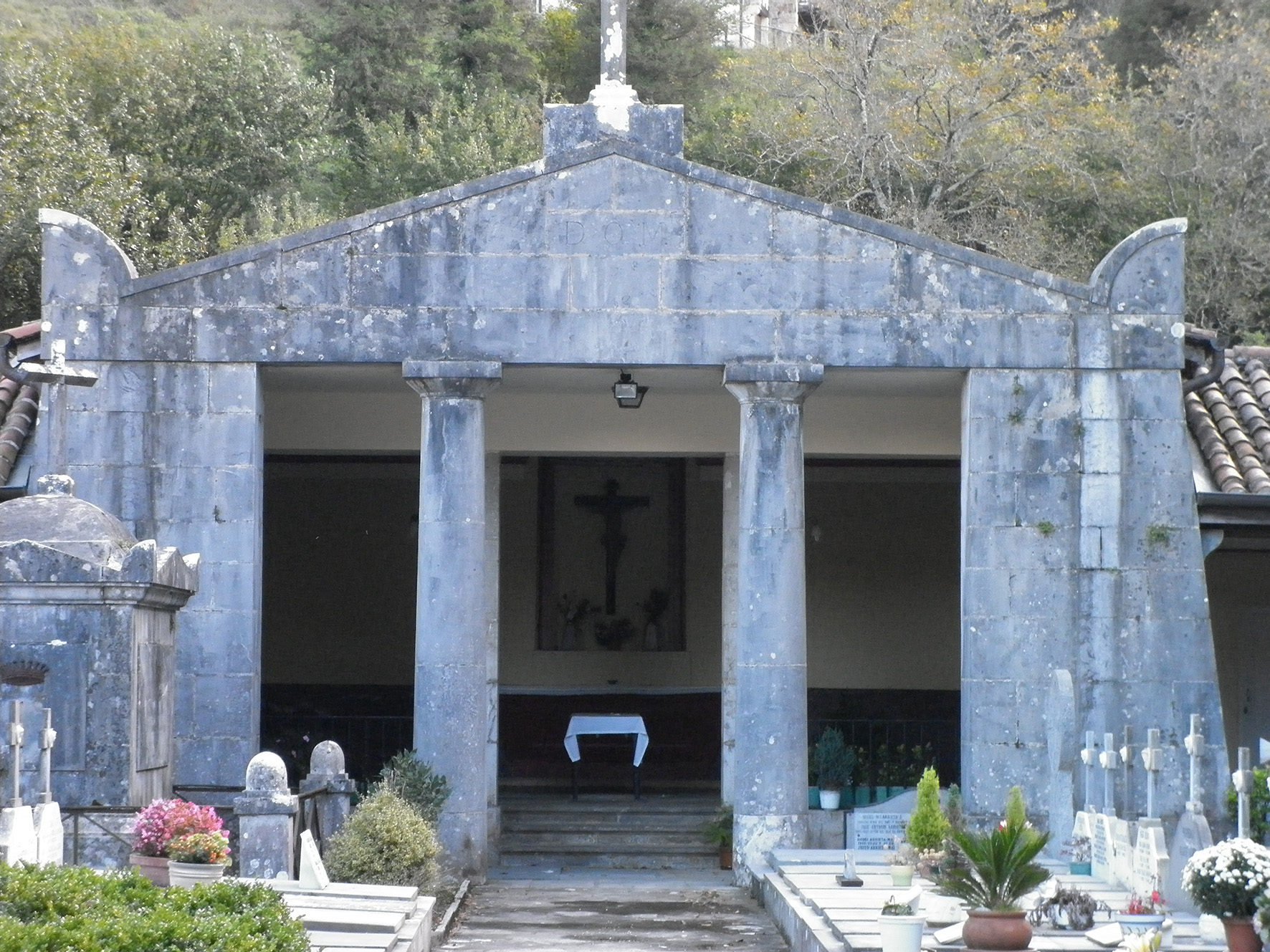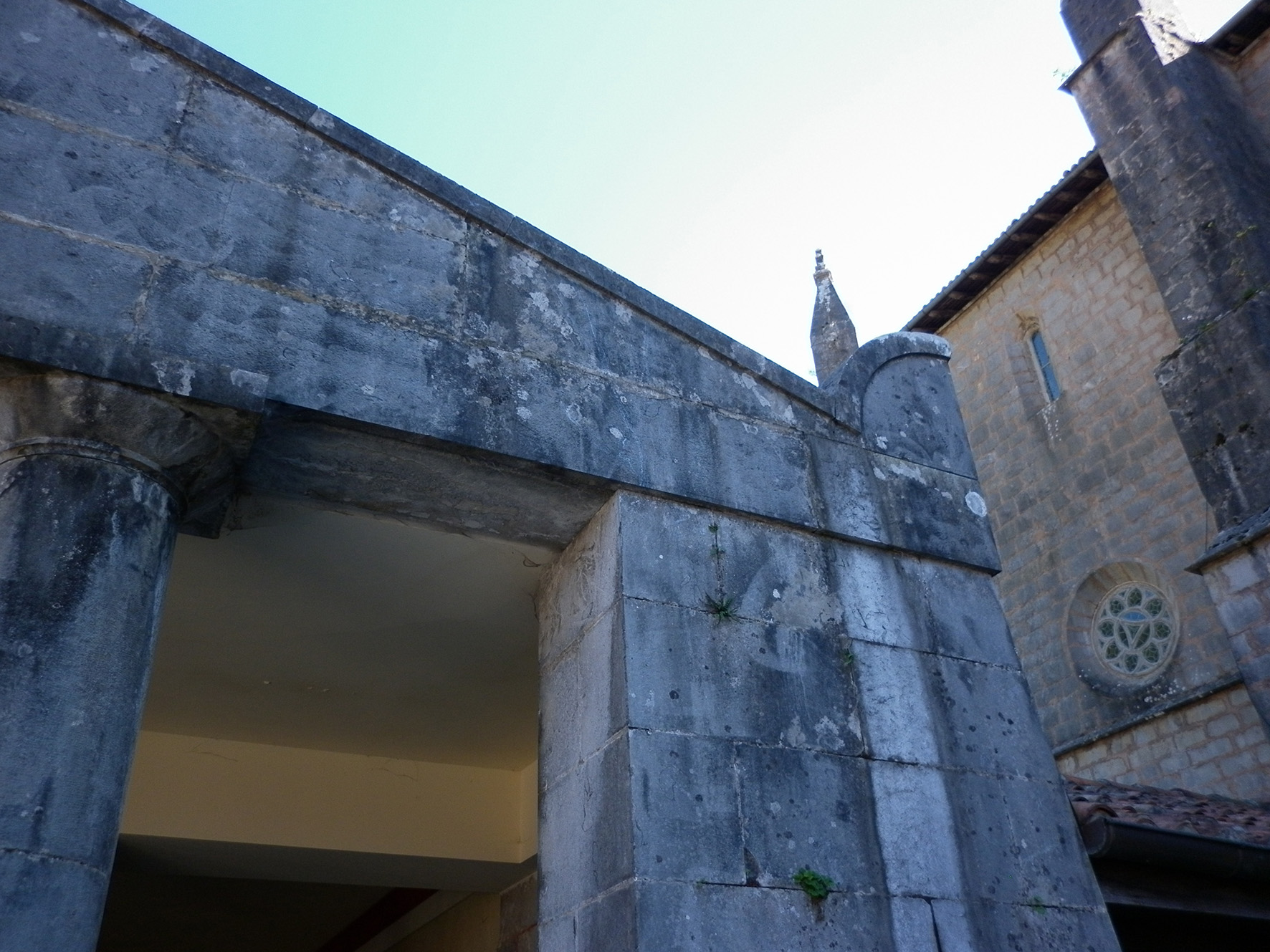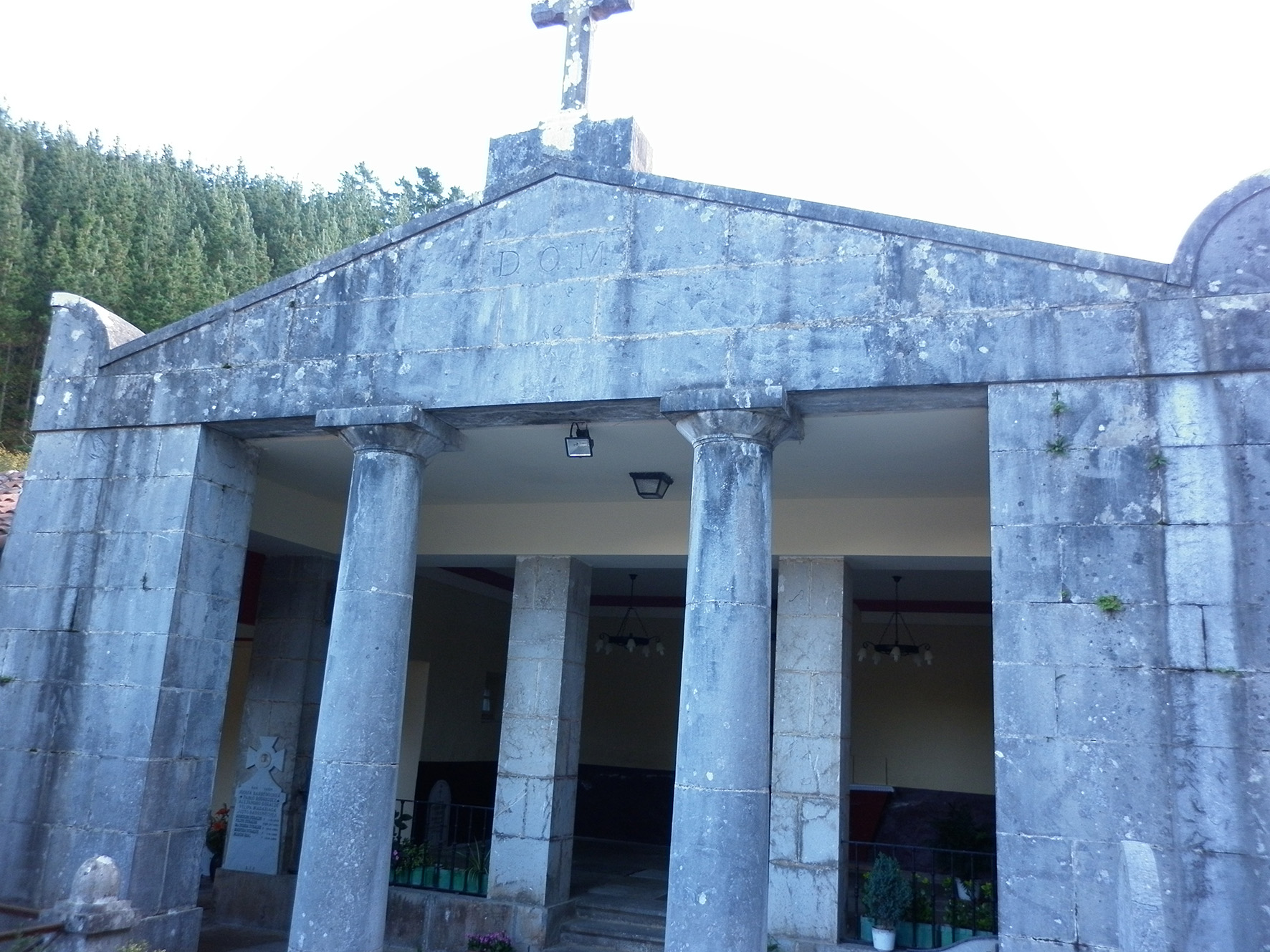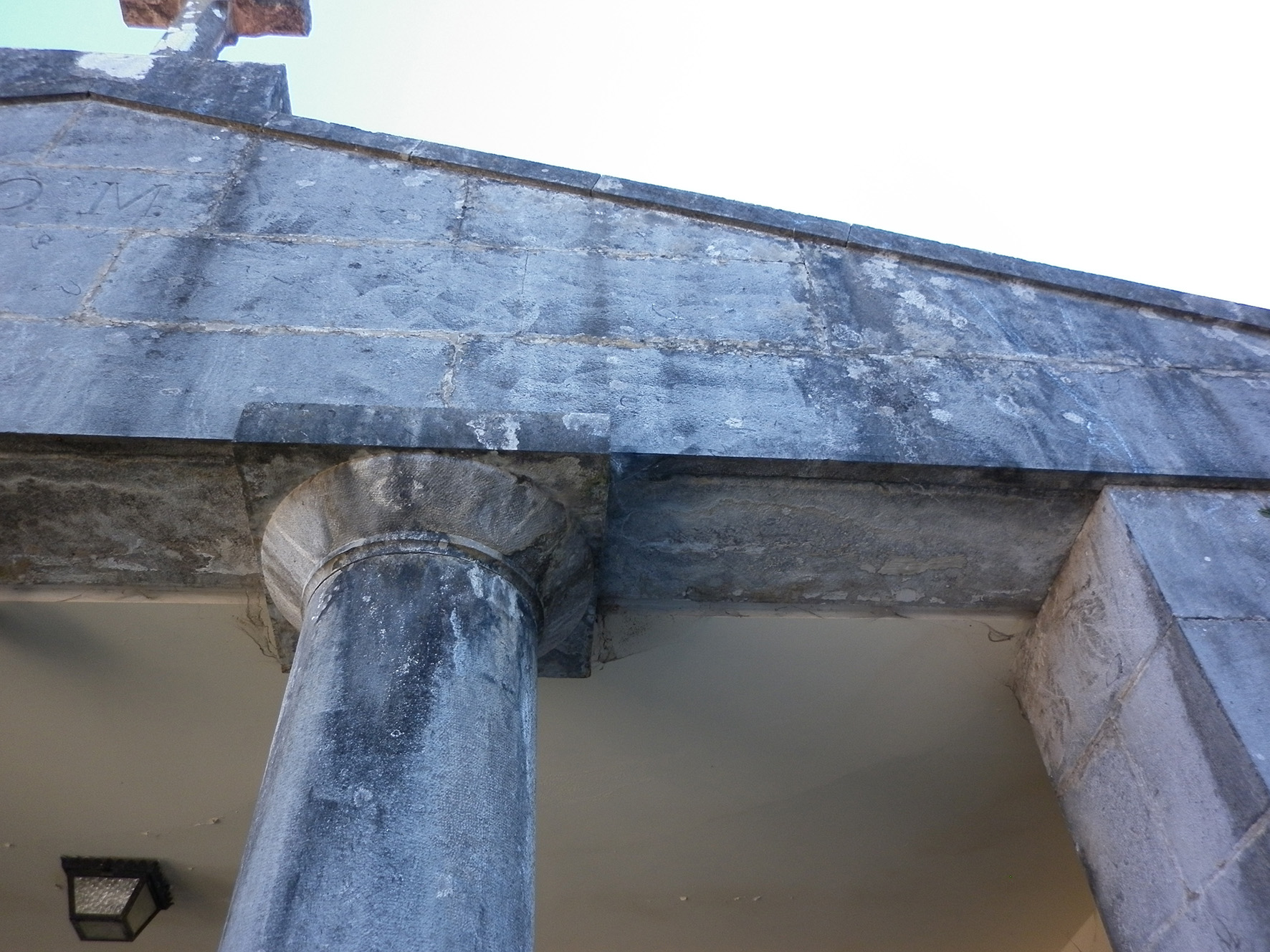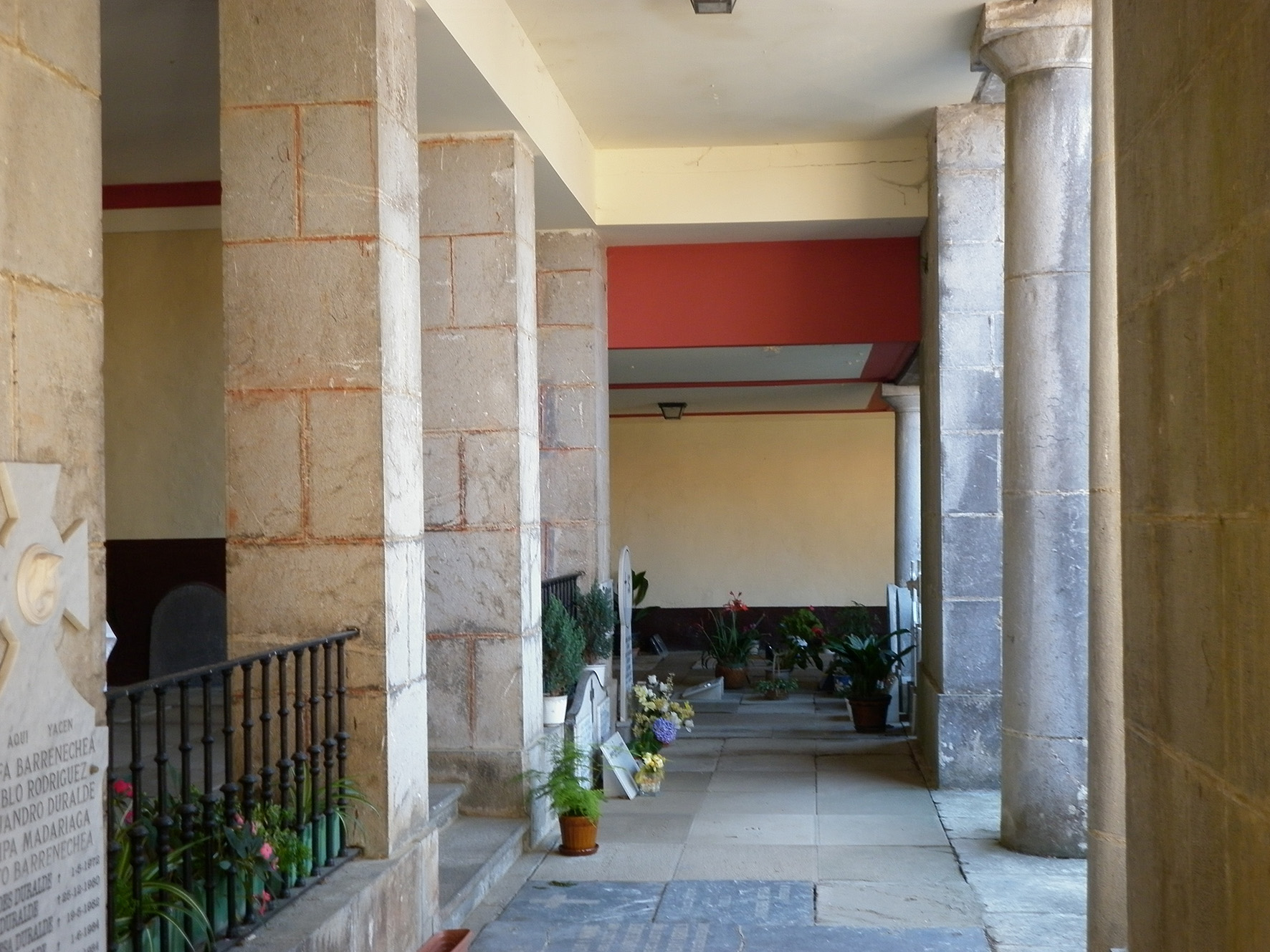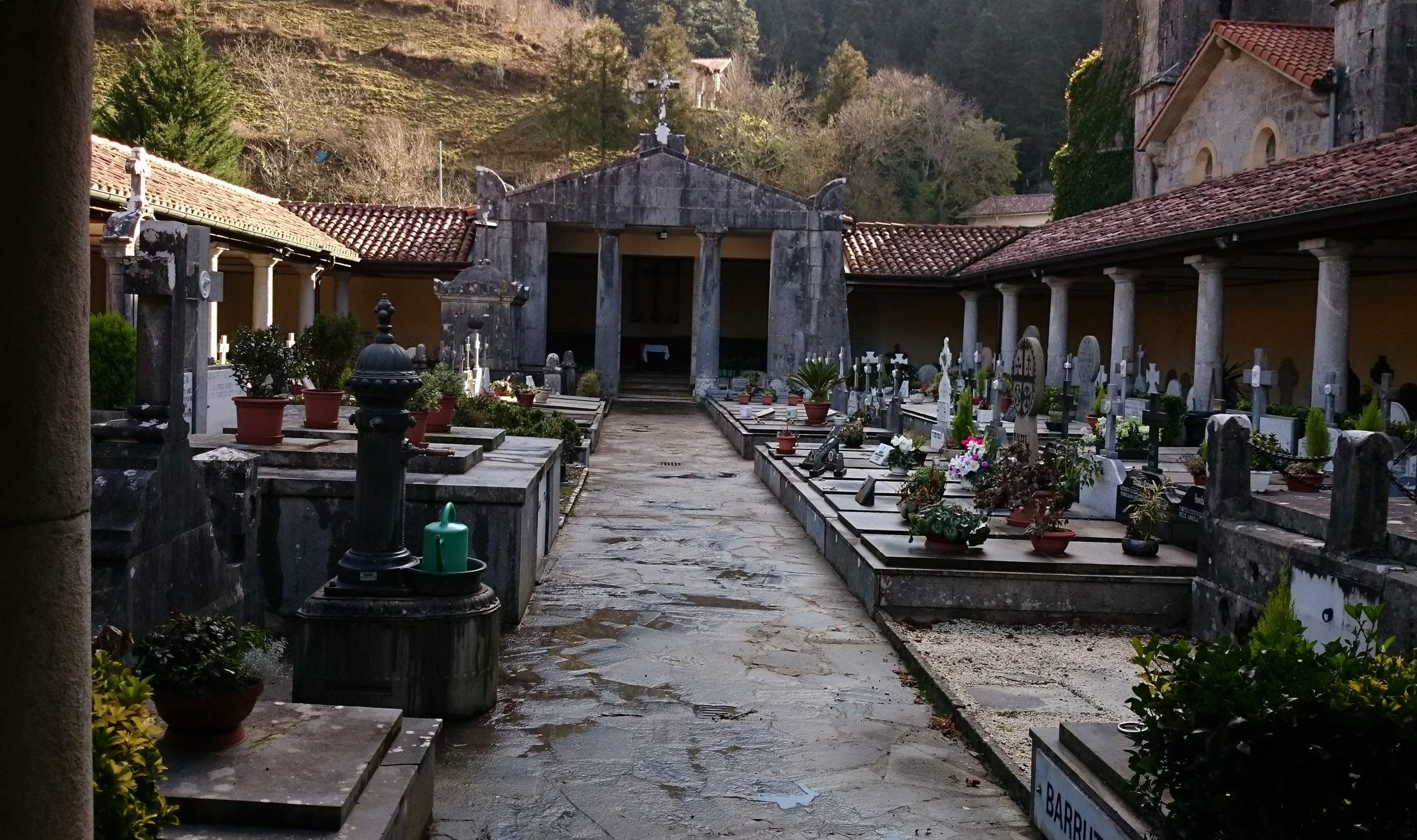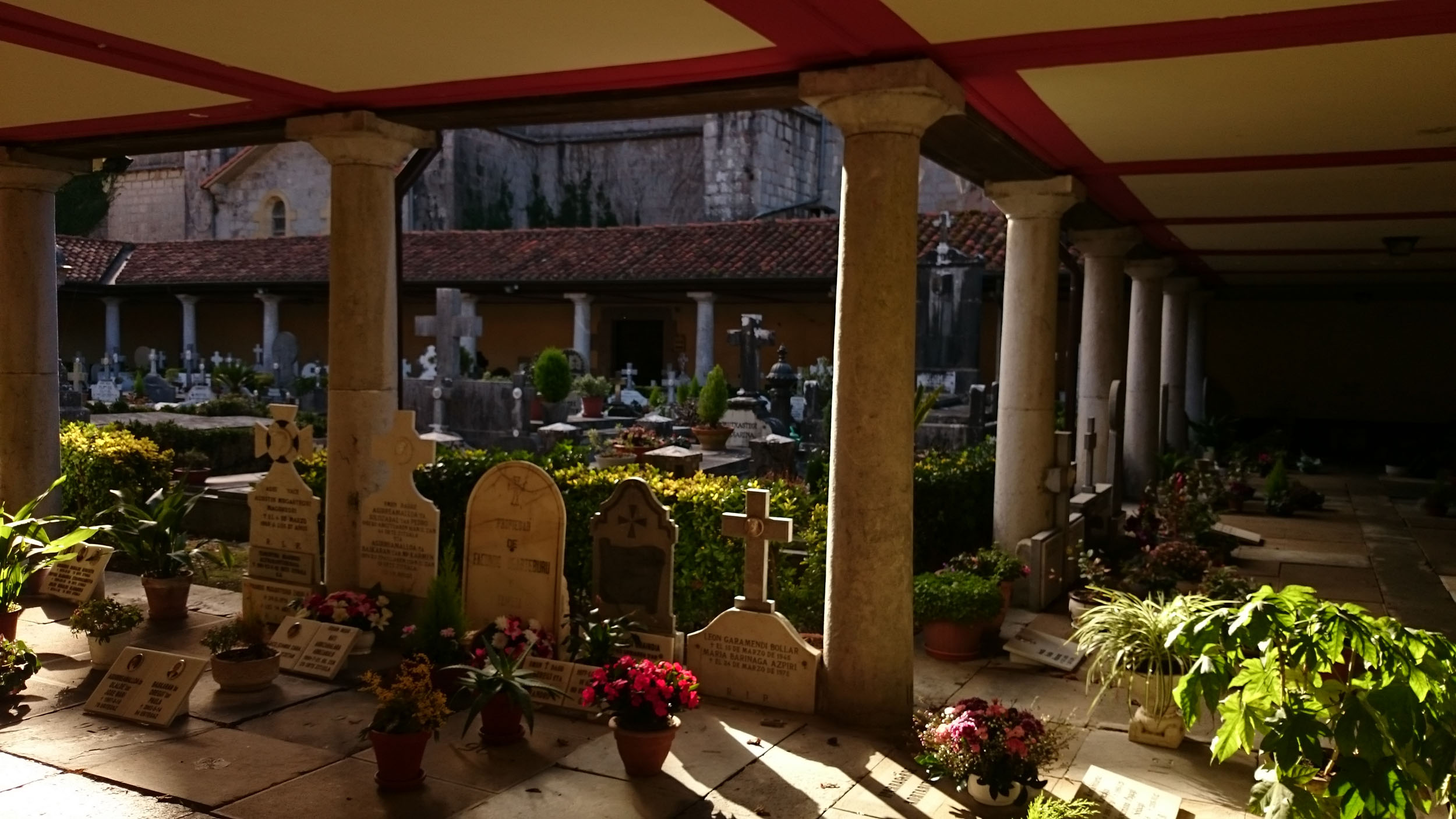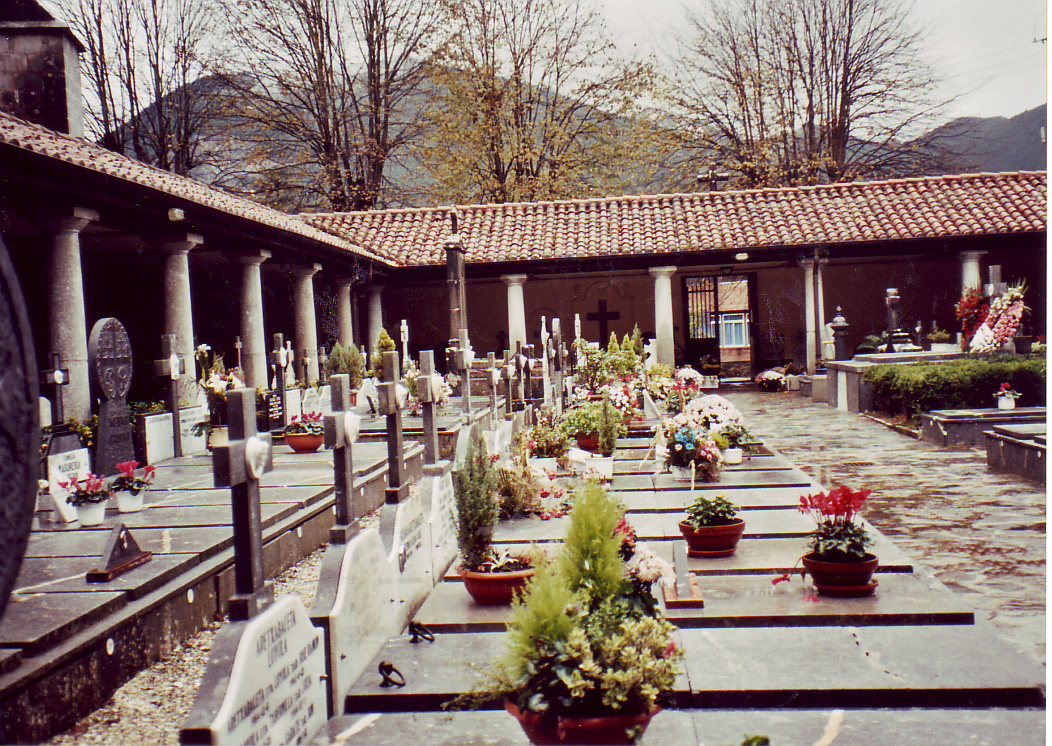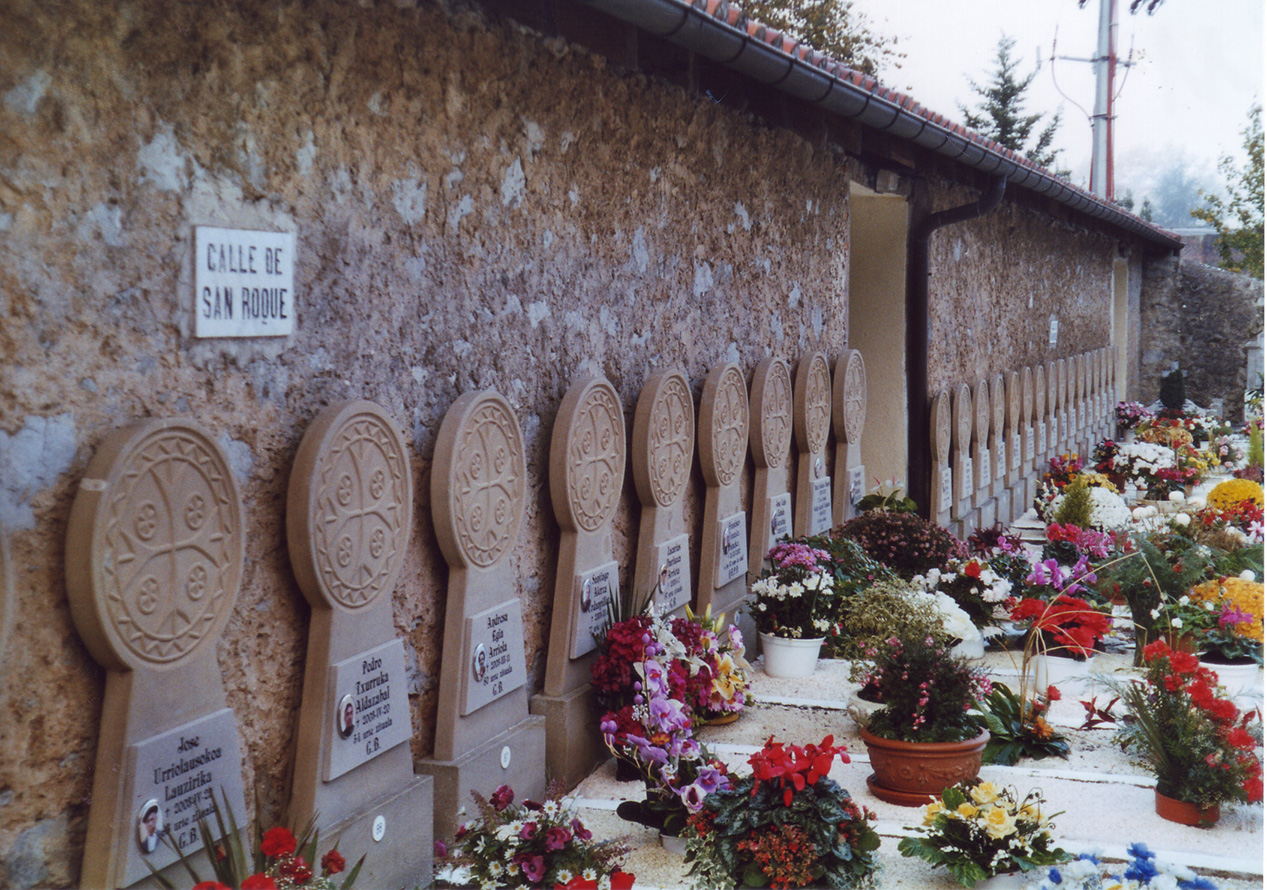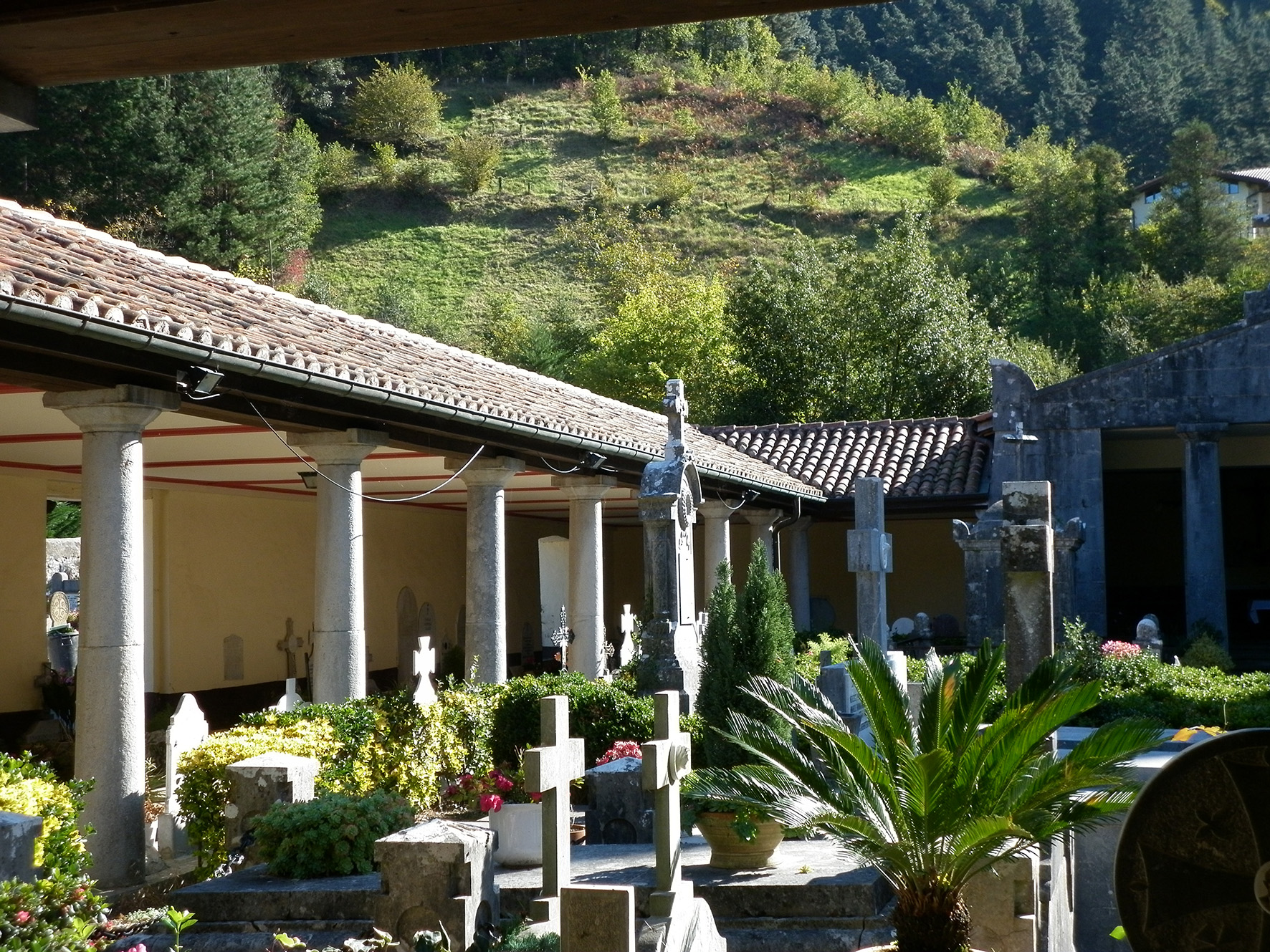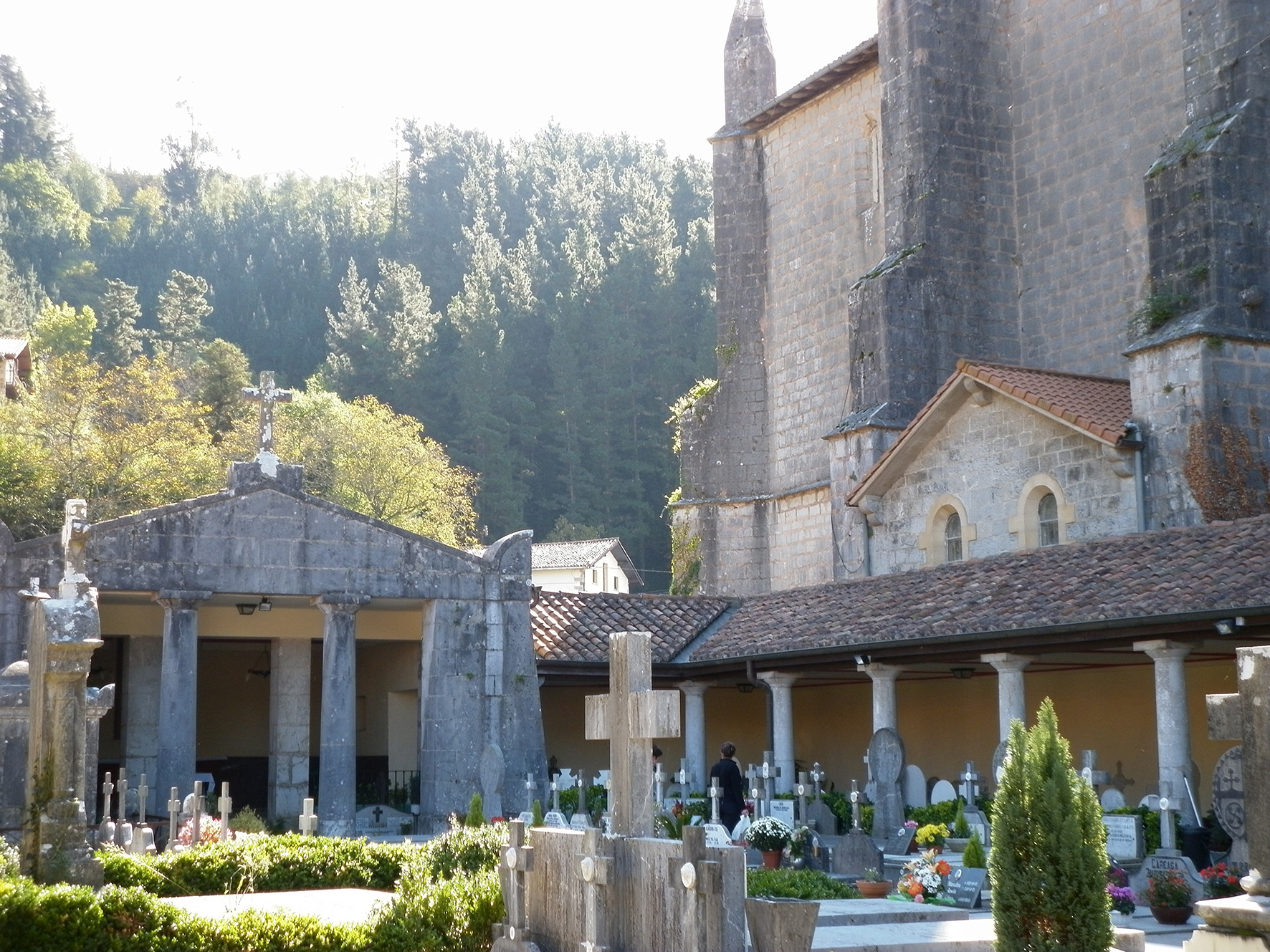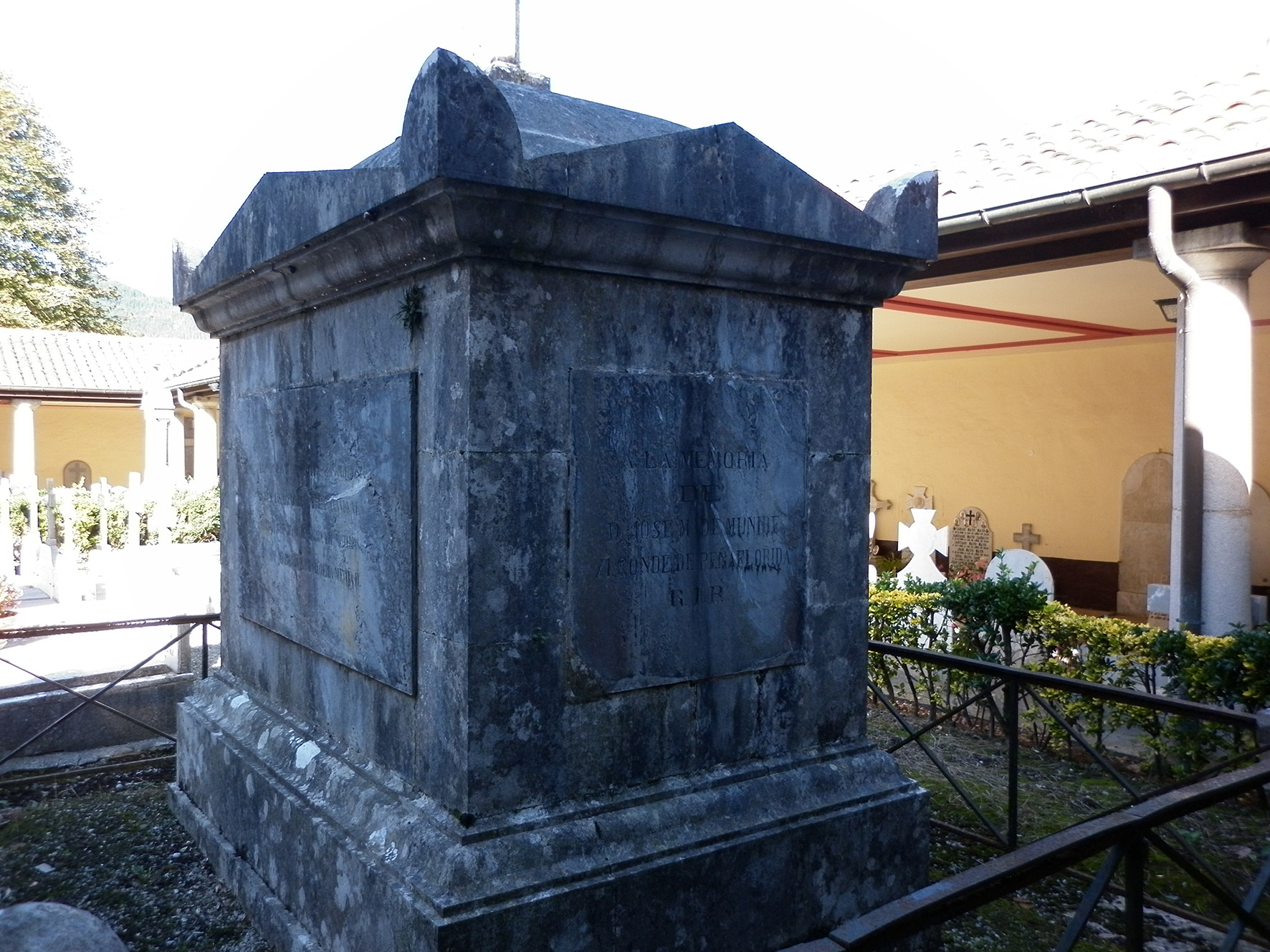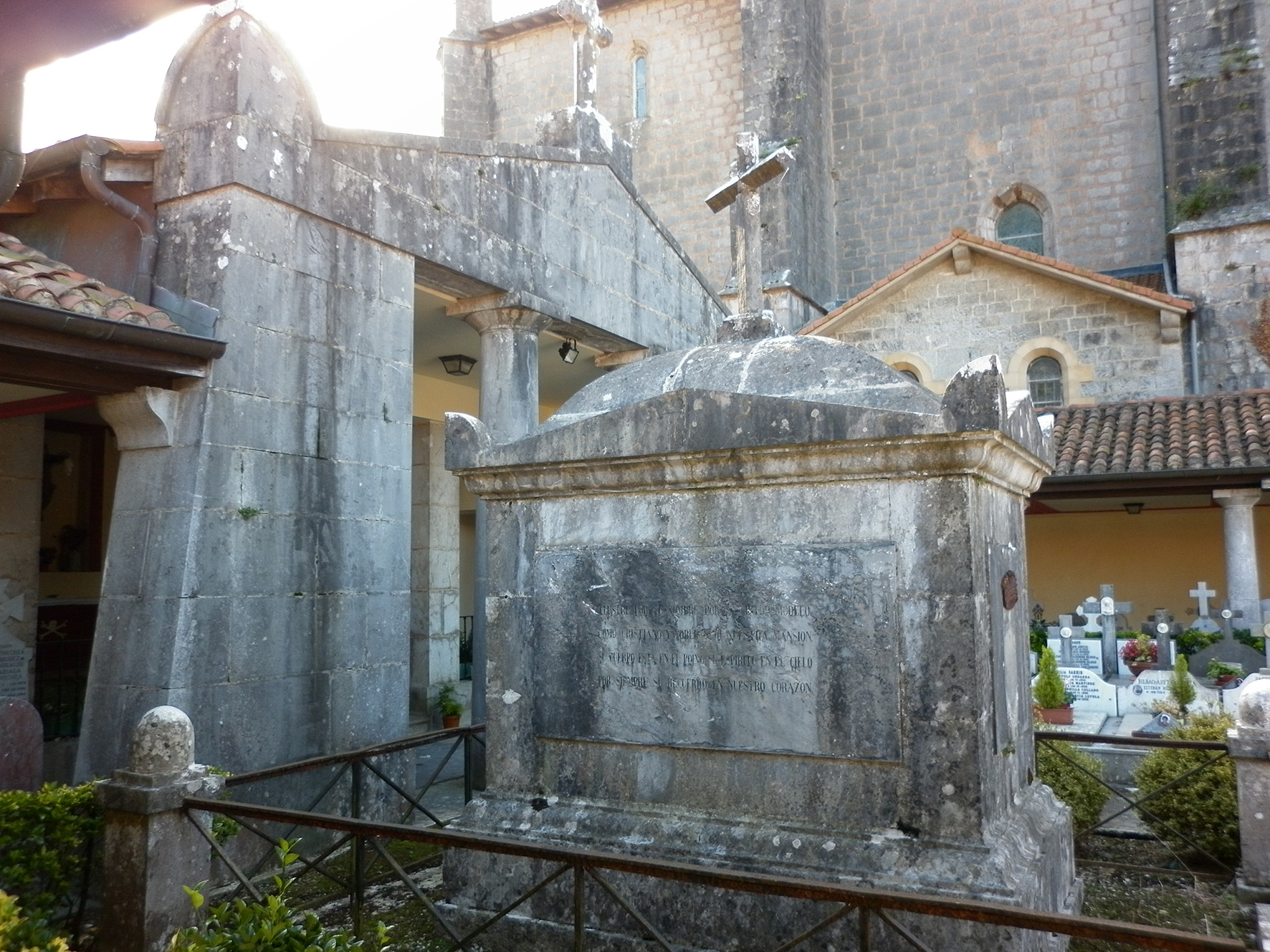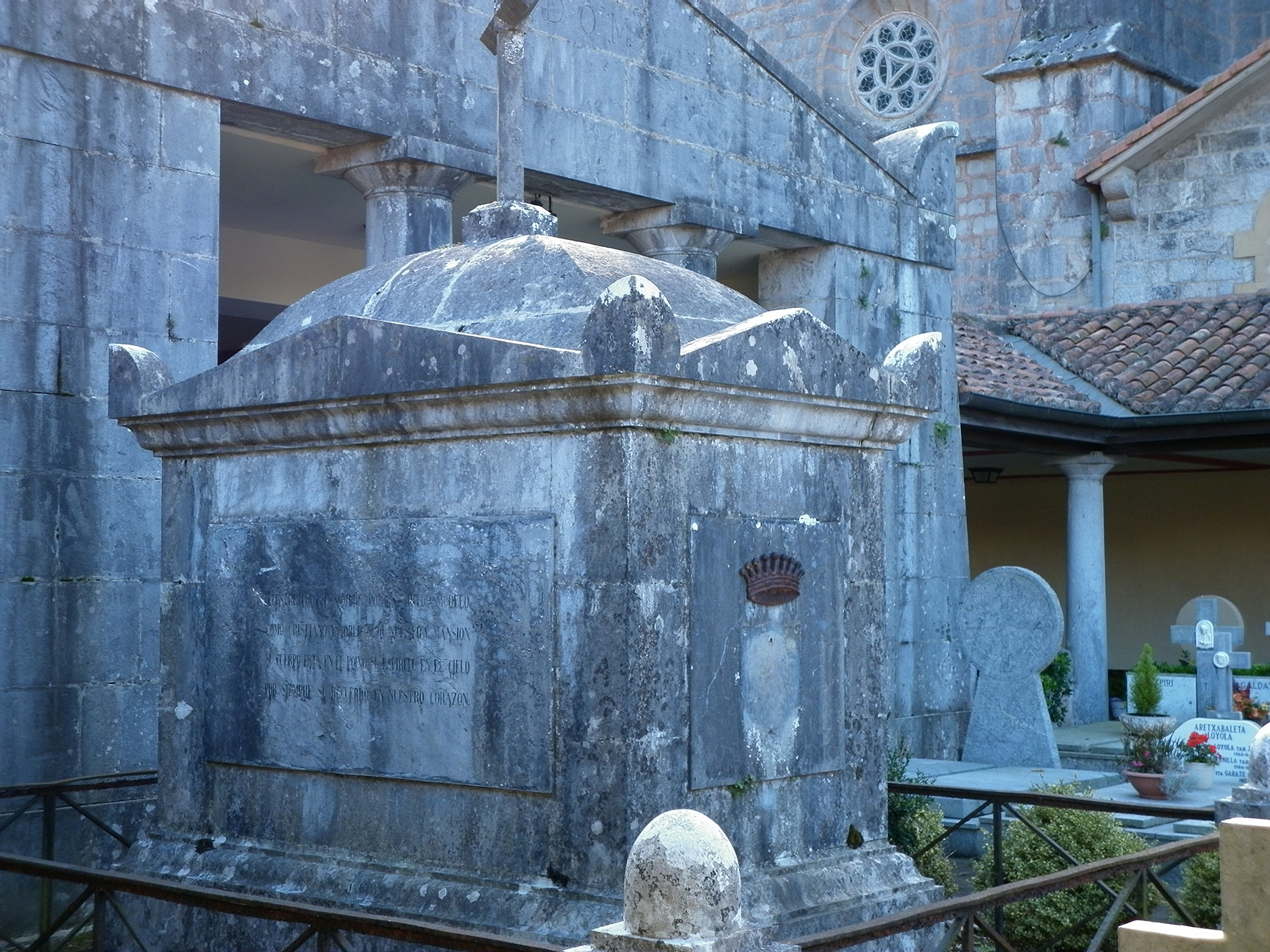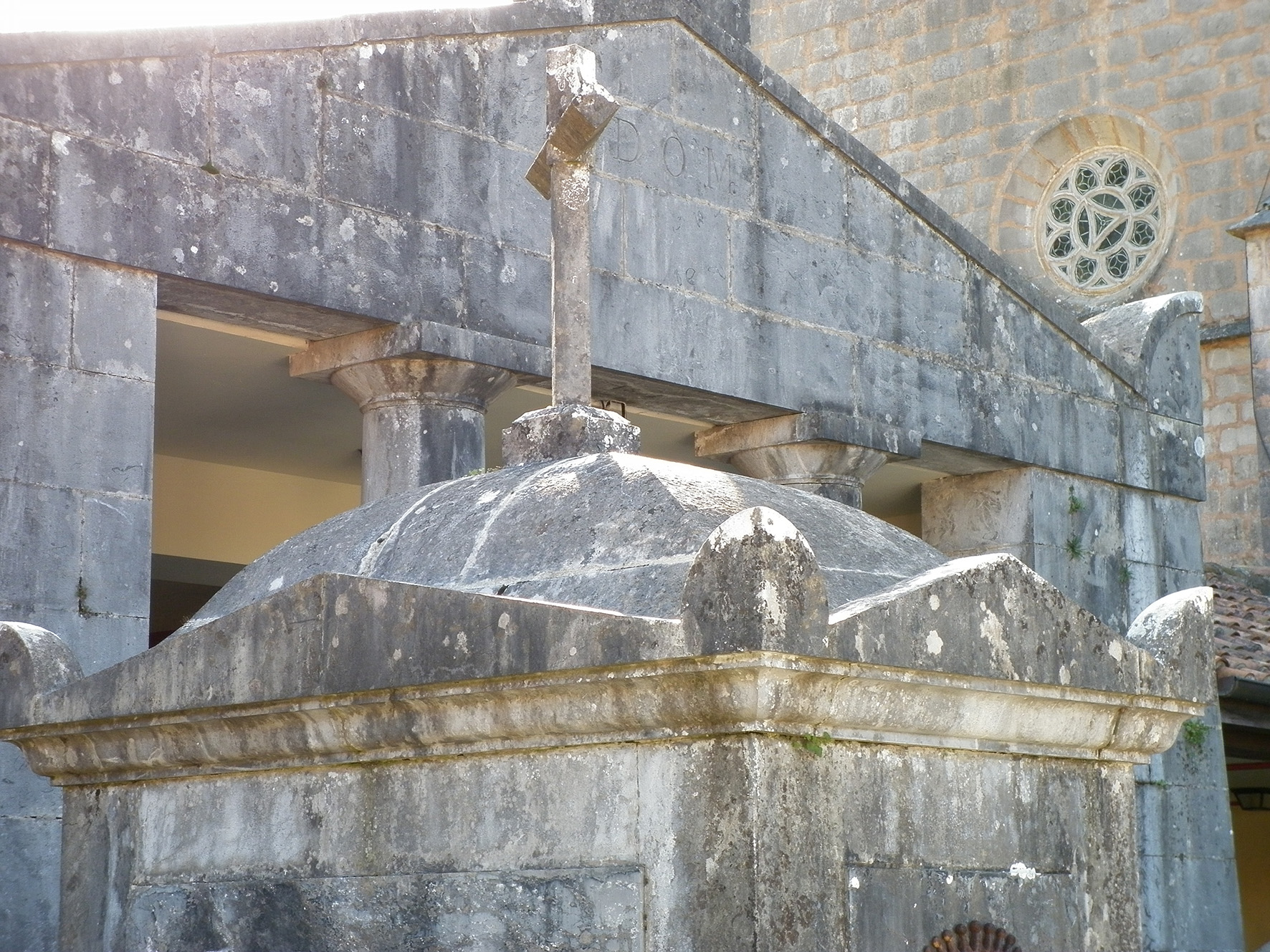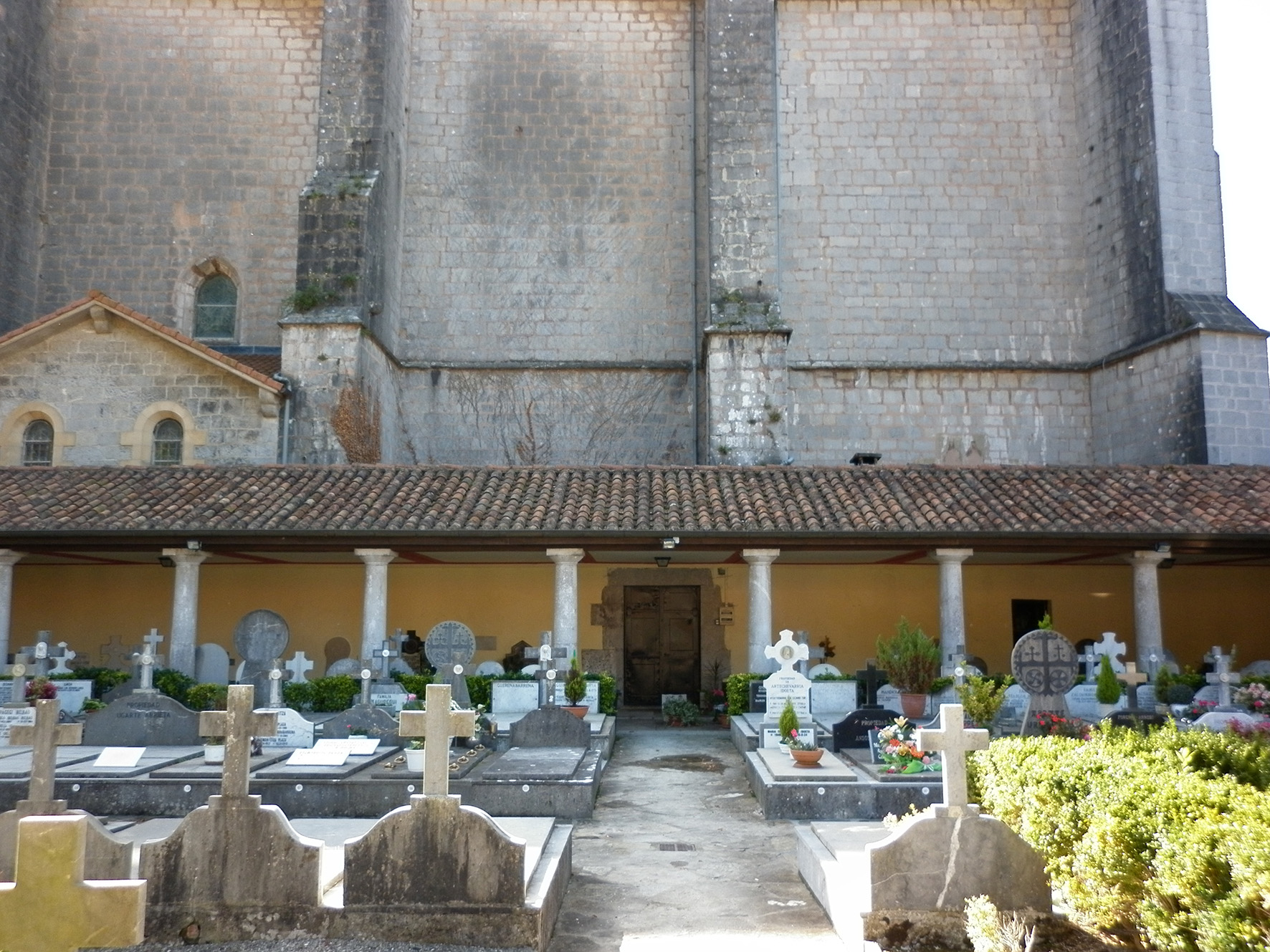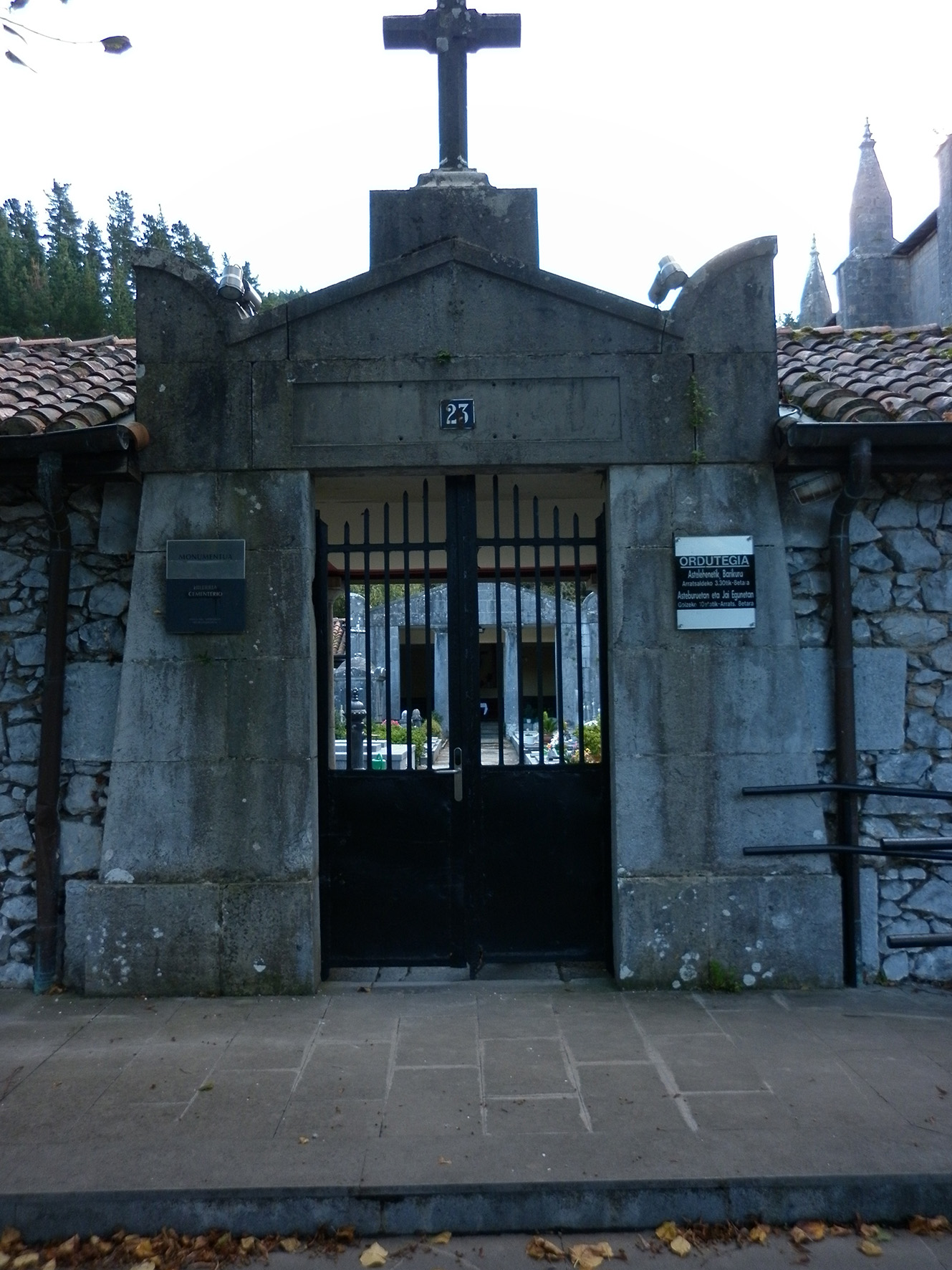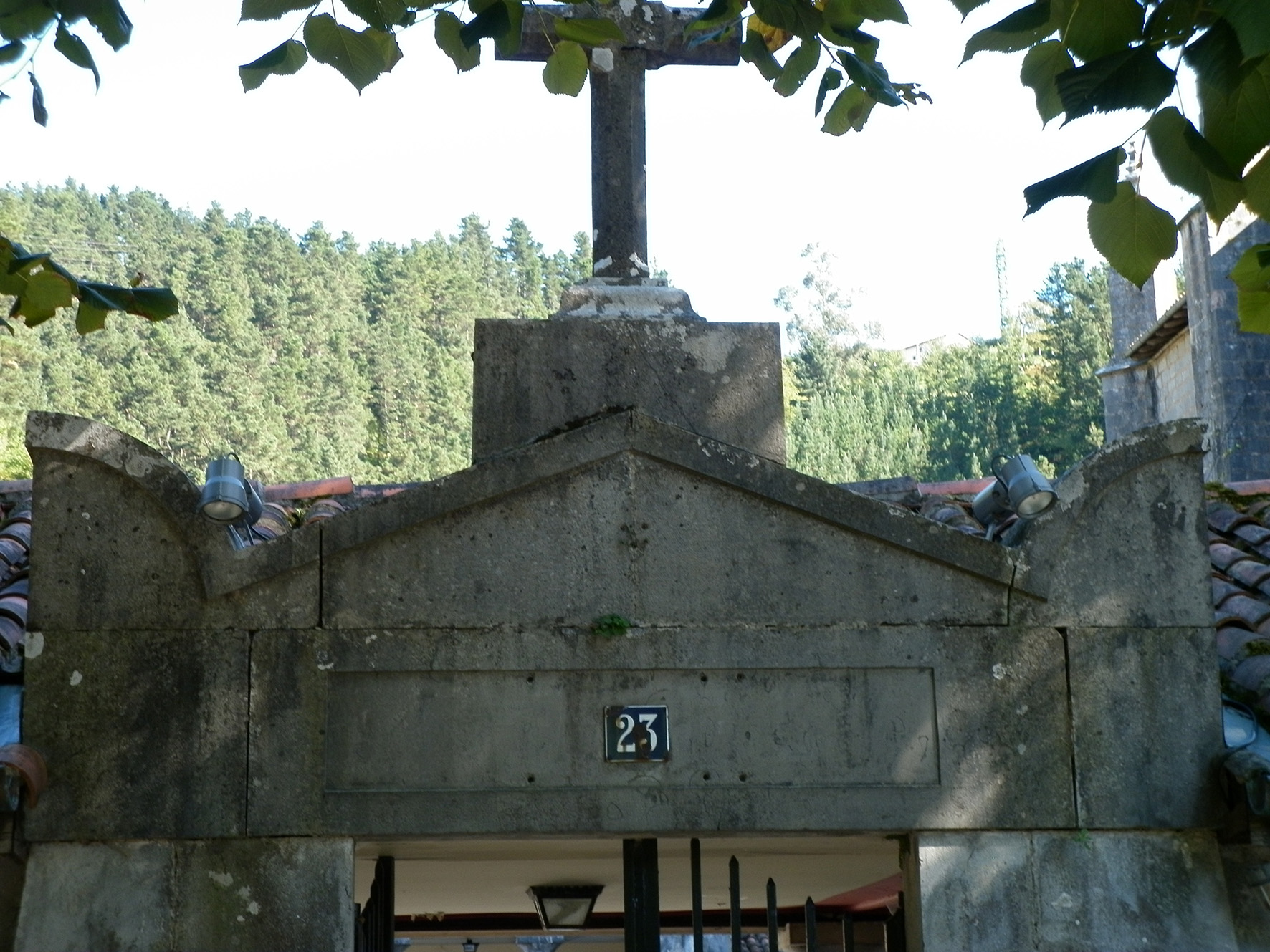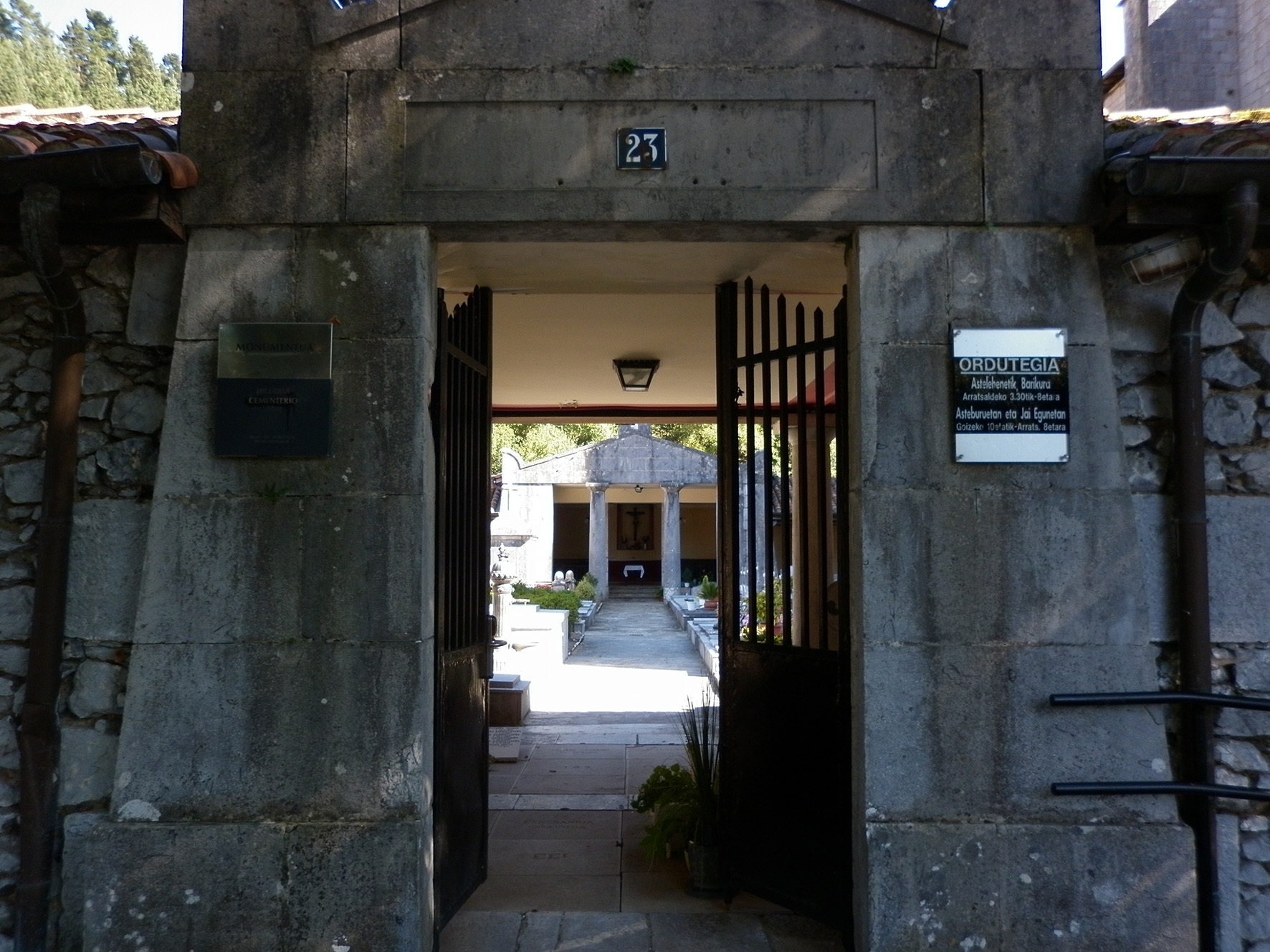Attached to the church of Santa María de Xemein, we find the cemetery. Built under the neoclassical label and following the renovating ideas of the Enlightenment, it was built on the outskirts of the town ensuring hygienic and sanitary precautions. In the place occupied by the current cemetery, at the beginning of the 19th century there were graves. However, the cemetery that we know today is from the mid-19th century. It was laid out by the architect Mariano Lascurain and built by José Sodupe and Pedro José Loyola. In 1849 the land was purchased and in the years 1850-1851 construction proceeded. It is rectangular in shape with a gallery of columns and a chapel at the end with a Romanesque Christ. The main access traces the dividing line of the cemetery in two equal parts. Likewise, the cemetery can be accessed from the church and from the municipal parking lot. The burial place, which must have been at first within the arcaded space, was later moved to the uncovered area in which the mausoleum of José María de Munibe, XI count of Peñaflorida stands out. The neoclassical expressions can be seen in the main entrance, in the Munibe mausoleum and in the hall that precedes the chapel. In them we can see Neo-Greek elements (triangular pediment, columns and ornamental edge tiles) and Neo-Egyptian (shapes that recall the facades of Egyptian temples, pylons). Likewise, the gallery of columns recalls the Roman dwelling model. It has been declared a National Monument of the Basque Country.
Continue visit:
Following monuments

